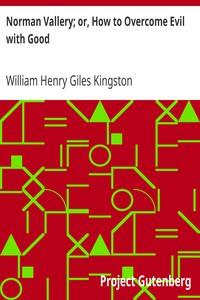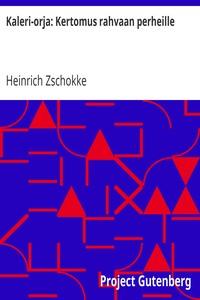|
|
Read this ebook for free! No credit card needed, absolutely nothing to pay.Words: 102711 in 22 pages
This is an ebook sharing website. You can read the uploaded ebooks for free here. No credit cards needed, nothing to pay. If you want to own a digital copy of the ebook, or want to read offline with your favorite ebook-reader, then you can choose to buy and download the ebook.

: The Philippine Islands 1493-1898 — Volume 28 of 55 1637-38 Explorations by Early Navigators Descriptions of the Islands and Their Peoples Their History and Records of the Catholic Missions as Related in Contemporaneous Books and Manuscripts Showing the@FreeBooksWed 07 Jun, 2023 Preface. 9 Documents of 1637-38 Appendix: Religious conditions in the Philippines during the Spanish r?gime Bibliographical Data 369 The Jesuit Juan de Barrios, who accompanied Corcuera in his expedition against Jolo, relates the events of that campaign in letters to Manila. The Spaniards are repulsed several times in attacking the Moro stronghold, and one of their divisions is surprised by the enemy with considerable loss to the Spaniards. Corcuera then surrounds the hill with troops and fortifications, and begins a regular siege of the Moro fort; various incidents of this siege are narrated. On the day after Easter the Moros, starved and sick, send Corcuera proposals for surrender; and finally they abandon their stronghold, and take flight, leaving the Spaniards in possession of all their property as well as the fort. A letter from Zamboanga adds further particulars of the surrender and flight of the Joloans, the mortality among the Spaniards, the garrison left there by Corcuera, etc. An interesting account of the religious estate in the islands about 1735 is furnished by the Franciscan writer Juan Francisco de San Antonio. Beginning with the cathedral of Manila, he sketches its history from its earliest foundation, and describes its building and service, with the salaries of its ecclesiastics; and adds biographical sketches of the archbishops down to his time, and the extent of their jurisdiction. Then follow accounts, both historical and descriptive, of the ecclesiastical tribunals, churches, colleges, and charitable institutions--especially of San Phelipe college and La Misericordia. San Antonio enumerates the curacies in the archbishopric, and the convents and missions of the calced Augustinians. He then describes the educational work of the Jesuits, giving a history of their colleges of San Ignacio and San Jos?, and enumerates their houses and missions; another sketch furnishes similar information regarding the Dominicans, who have especial charge of the Chinese residing in Luz?n. Like accounts are given of the Recollects, of the hospital brethren of St. John of God, and of the author's own order, the discalced Franciscans. On the same plan, he surveys the religious estate in all the bishoprics suffragan to Manila; and, finally, computes the numbers of the Christian native population in the islands. Another survey of religious matters in the islands is furnished by the Jesuit Juan J. Delgado. He enumerates the ministries of souls in methodical order, beginning with those held by the secular clergy in each diocese--in all, fifty-three. Those of the calced Augustinians are noted in the same manner; then those of the Franciscans, Jesuits, Dominicans, and Augustinian Recollects; and the convents and hospitals of the hospital order of St. John of God. Among these are also mentioned the schools and colleges, and the hospitals, conducted by the orders. Delgado states that the Christian population of the islands actually numbers over 900,000 persons; adding to this the children under seven years of age, who are not enumerated by the missionaries, he estimates that it must exceed a million of souls. He enumerates the numbers of villages and of their inhabitants who are in charge of each of the respective orders. He estimates the number of tributes paid annually by the natives at a quarter of a million, and describes the requirements and mode of payment, and the allotments made from the tributes for the support of religious instruction. He then relates in detail the number and remuneration of all ecclesiastical offices, from bishop to cura. Delgado then describes the ecclesiastical tribunals of the islands, the organization and good work of La Misericordia, and other charitable institutions in Manila, with the royal chapel, hospital, and college. The French scientist Le Gentil describes the religious conditions in the islands. He enumerates the benefices connected with Manila cathedral, and the salaries and duties of their incumbents; and the ecclesiastical tribunals in that city--those of the archbishop, the Inquisition, and the Crusade. Then he relates interesting details about the churches, convents, schools, and other institutions. Among these are the royal chapel, the seminary of San Felipe, the seminary of Santa Isabela, the confraternity of La Misericordia, the universities, and the hospitals. Le Gentil describes the ecclesiastical machinery of the suffragan dioceses, and the convents therein--all more extensive and costly than the population and wealth of the country justify. The rest of his account is devoted to "the power and influence enjoyed by the religious in the Philippines." He says: "Masters of the provinces, they govern there, as one might say, as sovereigns; they are so absolute that no Spaniard dares go to establish himself there.... They are more absolute in the Philippines than is the king himself." They ignore the royal decrees that the Indian children must be taught the Castilian language; thus the friars keep the Indians in bondage, and prevent the Spaniards from knowing the real state of affairs in the provinces. They have refused to allow the visitations of the archbishops--a matter explained at considerable length by the writer. The natives sometimes revolt, and then the friars cannot influence them, but troops must be sent to punish the rebels. Le Gentil also relates the manner in which the friars punish the natives for not attending mass, by flogging them--not only men, but women, and that in public. The German traveler Feodor Jagor presents an interesting view of the character and influence of the friars. He praises their kindly and hospitable treatment of strangers, and the ability and knowledge that they often display; and defends those whom he has known from the charge of licentiousness. He discusses the relations between the curas and civil alcaldes--the former being often the protectors of the Indians against the latter. The Editors July, 1905. DOCUMENTS OF 1637-1638 Free books android app tbrJar TBR JAR Read Free books online gutenberg More posts by @FreeBooks
: Daemonologie. by James I King Of England - Magic; Witchcraft Scotland; Demonology; Fian John -1591@FreeBooksWed 07 Jun, 2023

: Norman Vallery; or How to Overcome Evil with Good by Kingston William Henry Giles - Christian life Juvenile fiction; Children Conduct of life Juvenile fiction; Siblings Juvenile fiction@FreeBooksWed 07 Jun, 2023
|
Terms of Use Stock Market News! © gutenberg.org.in2025 All Rights reserved.






